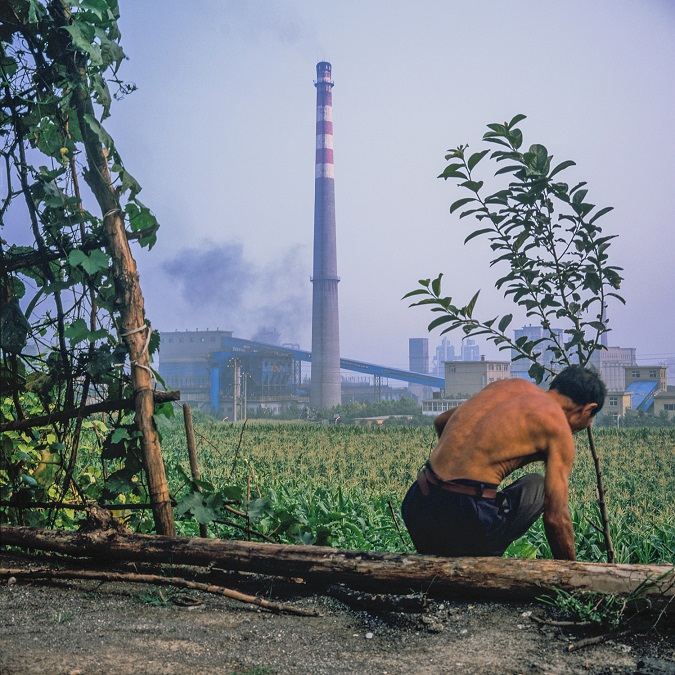China's Polluted Steel Town

A resident of Sihoupo tends to his vegetable garden. A Hansteel coking plant is in the background.
In traditional Chinese architecture, a small wall stands a few feet in front of the entrance to a home. According to the principles of feng shui, this wall shields the occupants from malign energy forces. But in the city of Handan such walls have acquired another significance: as protection against acrid smoke billowing from the city’s factories. One summer evening in Sihoupo, a western suburb of Handan with three hundred residents, the glowing yellow flames of a coking plant erupted into the sky. Clouds swirled up around the factory, saturating the air with the smell of rotten eggs. Coking concentrates soft bituminous coal into hard briquettes that are used to smelt iron into steel, but it also produces carcinogenic emissions. “We can’t open our windows at night,” Hu Xuhui, a man in his late sixties who lives across from the factory, told me. “The days are bad, but the nights are worse.”
Handan is situated in Hebei Province, which accounts for ten per cent of the world’s output of steel. “On bad days, you cannot see the other side of a four-lane road,” Johnson writes. “Earlier this year, a factory leaked a toxic chemical in to the Zhuozhang River, which feeds the city’s reservoir. The river turned brown, dead fish were found floating on the surface, and city’s water was cut off overnight.”
This past summer, the photographer Sim Chi Yin, whose photograph accompanies this article, spent some time in Handan, which is two hundred and fifty miles to the southwest of Beijing, to document the pollution. “What troubled me most was Sihoupo”—a western suburb of Handan—she told me. “Driving around for days, we found Sihoupo, and the branch of the Hansteel factory less than a hundred metres away from it, belching out grey, black, and yellow smoke and steam around the clock. At times, naked flames can be seen shooting up from the coking plant. Families ate and children played less than a hundred metres away from the giant chimney. The smoke sometimes floats low, over their corn fields. I climbed up a hillside overlooking the village and the factory, and met shepherds herding their sheep there, eating the crops, grass often blanketed by the emissions from the coking plant. Women and men gathered outside their village houses before their evening meal spoke about cancer cases and miscarriages. There’s no way to verify all that, since no studies have been done. It was sobering and saddening.”
Although pollution in Beijing has attracted global attention in recent years—and has sometimes caused expats and tourists to flee—environmental damage is much worse in smaller industrial cities. According to government figures, of the ten most polluted cities in China, seven are in Hebei Province, and Handan is one of them. On bad days, you cannot see to the other side of a four-lane road. Earlier this year, a factory leaked a toxic chemical into the Zhuozhang River, which feeds the city’s reservoir. The river turned brown, dead fish were found floating on the surface, and the city’s water was cut off overnight. Supplies had to be trucked in, and there was a run on bottled water.
You can return to the main Market News page, or press the Back button on your browser.

